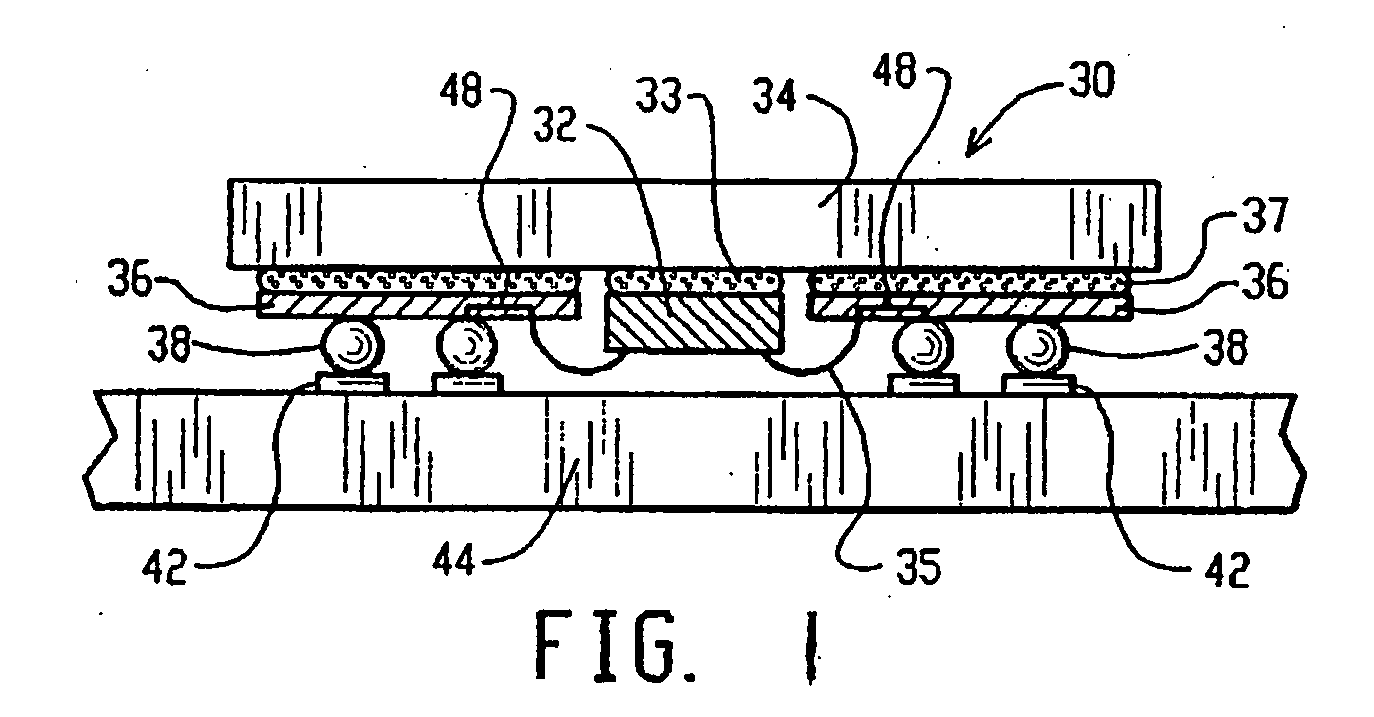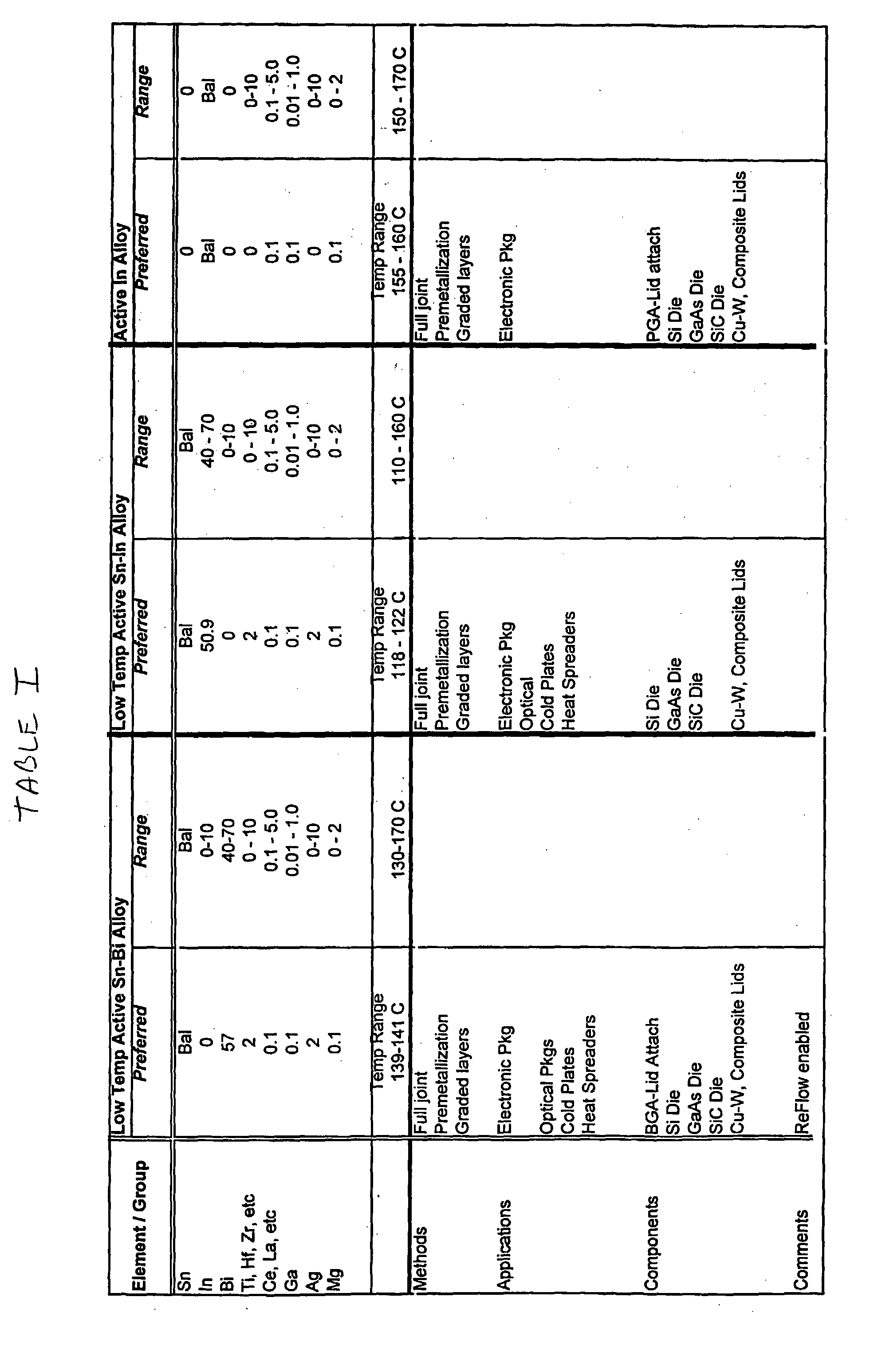Electronic Package Formed Using Low-Temperature Active Solder Including Indium, Bismuth, and/or Cadmium
a technology of active solder and electronic components, which is applied in the direction of solid-state devices, machines/engines, metal-working apparatuses, etc., can solve the problems of flux residues remaining on the soldered workpiece surface, complex operation of the soldering operation, and high risk, and achieve high-temperature conductivity joints and high-strength
- Summary
- Abstract
- Description
- Claims
- Application Information
AI Technical Summary
Benefits of technology
Problems solved by technology
Method used
Image
Examples
Embodiment Construction
[0021] This patent application describes a series of lower-temperature active solders to for use in electronic packaging. The reason to create lower temperature active solders, in contrast to the known active solder compositions (e.g., the Sn—Ag—Ti—Ga—Ce composition taught by U.S. Pat. No. 6,231,693 issued to Lugscheider et. al.), lies in the need to join at temperatures below 220° C. and even more importantly below 183° C. This latter temperature is the eutectic melting temperature for the Pb—Sn solders that are still being used as solder interconnects in direct mount, ball grid arrays (BGA's).
[0022] A solubility curve defines the solubility limit (maximum solute addition without supersaturation) of a solid in a liquid. The point at which two solubility curves intersect in a phase or equilibrium diagram (a map from which the phases present at any particular temperature or composition can be read if the alloy is at equilibrium, i.e., if all possible reaction has been completed) def...
PUM
| Property | Measurement | Unit |
|---|---|---|
| Temperature | aaaaa | aaaaa |
| Percent by mass | aaaaa | aaaaa |
| Percent by mass | aaaaa | aaaaa |
Abstract
Description
Claims
Application Information
 Login to View More
Login to View More - R&D
- Intellectual Property
- Life Sciences
- Materials
- Tech Scout
- Unparalleled Data Quality
- Higher Quality Content
- 60% Fewer Hallucinations
Browse by: Latest US Patents, China's latest patents, Technical Efficacy Thesaurus, Application Domain, Technology Topic, Popular Technical Reports.
© 2025 PatSnap. All rights reserved.Legal|Privacy policy|Modern Slavery Act Transparency Statement|Sitemap|About US| Contact US: help@patsnap.com



